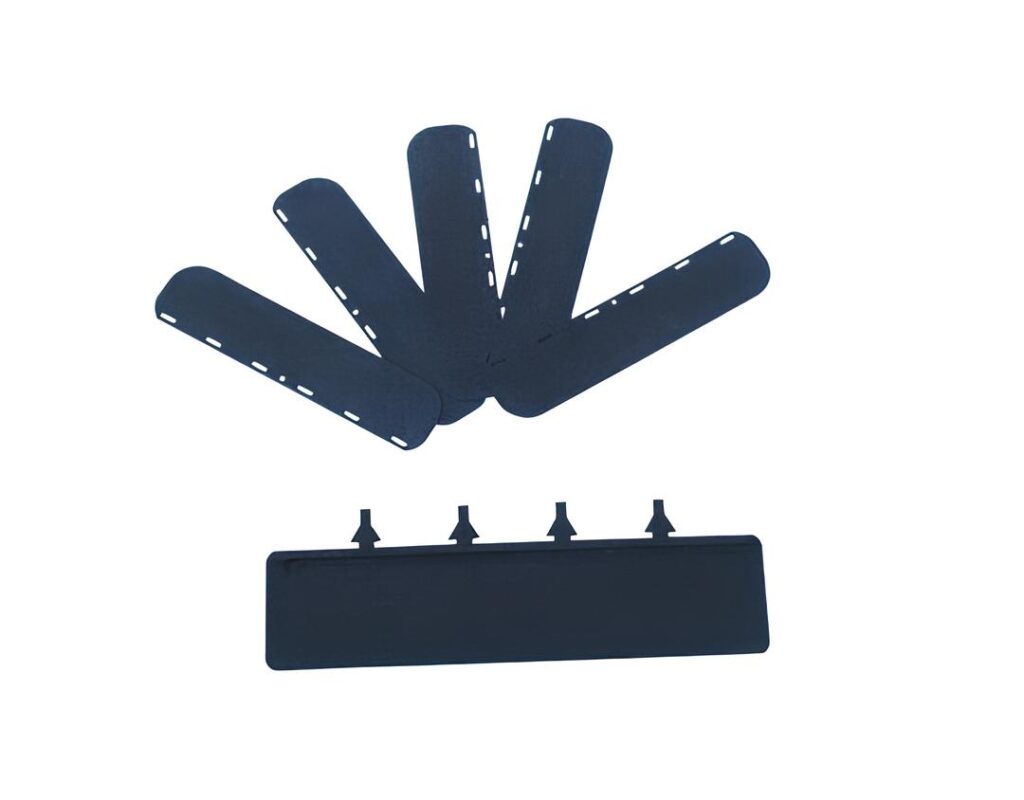Anti-vibration rubber pads are essential for reducing noise and vibrations in various applications, from machinery to vehicles. But how thick should these pads be for optimal performance?
The thickness of anti-vibration rubber pads typically ranges from 3mm to 50mm, depending on the specific application and the amount of vibration isolation needed.

In this article, we’ll explore the factors that determine the thickness of anti-vibration rubber pads1 and how to choose the right thickness for your needs.
What Determines the Thickness of Anti-Vibration Rubber Pads?
The thickness of rubber pads used for anti-vibration applications depends on several factors, including the weight of the equipment, the level of vibration, and the frequency range that needs to be isolated.
Thicker pads generally provide more isolation, but the optimal thickness depends on the vibration source and load capacity requirements.
Equipment Weight
The weight of the machinery or equipment plays a significant role in determining the thickness of the rubber pad. Heavier equipment usually requires thicker pads to effectively absorb vibrations.
- Lightweight Equipment: For smaller, lighter machinery, thinner pads (around 3mm to 10mm) can be effective in absorbing vibrations without taking up too much space.
- Heavy Machinery: For larger, heavier machinery or industrial equipment, thicker pads (20mm to 50mm) are necessary to provide adequate vibration isolation2 and prevent damage to the equipment.
Vibration Frequency
The frequency of the vibrations also influences the ideal thickness of the rubber pad. Low-frequency vibrations generally require thicker pads to absorb the energy, while higher-frequency vibrations may be managed with thinner pads.
- Low-Frequency Vibrations3: Thicker pads are better suited for isolating low-frequency vibrations, typically found in industrial machinery, engines, or large HVAC systems.
- High-Frequency Vibrations4: Thinner pads may suffice for high-frequency vibrations, such as those from smaller appliances or sensitive electronic devices.
Desired Vibration Isolation
If the primary goal is to significantly reduce vibrations and noise, thicker pads may be required. The level of vibration isolation needed will influence the thickness of the pad.
- Standard Isolation: For general applications where moderate vibration reduction is needed, thinner pads (3mm to 10mm) are often sufficient.
- Heavy-Duty Isolation: In applications with strong vibrations, such as industrial equipment or large machinery, thicker pads (20mm to 50mm) offer better performance in reducing vibrations.
Material Composition5
Different rubber materials have different properties, and their ability to absorb vibrations can vary. For example, neoprene and silicone have excellent vibration damping qualities, which might allow for thinner pads in certain applications.
- Neoprene: Known for its durability and vibration resistance, neoprene pads may be effective in medium-duty applications.
- Silicone: With excellent high-temperature and vibration resistance, silicone pads may also be used in thinner forms for specific applications.
| Application | Typical Pad Thickness | Vibration Frequency | Material Options | Notes |
|---|---|---|---|---|
| Light Machinery | 3mm to 10mm | High-frequency | Neoprene, Rubber | Ideal for small equipment |
| Heavy Machinery | 20mm to 50mm | Low-frequency | Silicone, Neoprene | Provides strong vibration isolation |
| HVAC Systems | 10mm to 30mm | Low to medium | Neoprene, Rubber | For large HVAC units and ductwork |
| Sensitive Devices | 3mm to 10mm | High-frequency | Silicone, Rubber | For electronics or delicate equipment |
Conclusion
The thickness of anti-vibration rubber pads is determined by the equipment weight, vibration frequency, and isolation needs. While thinner pads work for lighter, high-frequency applications, thicker pads are necessary for heavy-duty, low-frequency vibrations. Choosing the right thickness ensures that your equipment remains protected from harmful vibrations, improving its lifespan and performance.
Understanding the ideal thickness can help you choose the right pads for effective vibration isolation, enhancing equipment longevity. ↩
Exploring vibration isolation techniques can provide insights into improving machinery performance and reducing noise. ↩
Explore this link to understand the best materials and techniques for effectively isolating low-frequency vibrations in various applications. ↩
Discover insights on how high-frequency vibrations impact equipment and the best practices for managing them effectively. ↩
Learn about different rubber materials and their properties for vibration damping to make informed choices for your applications. ↩







